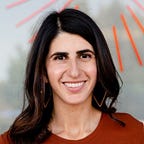“Consumer health” is coming of age — and it’s growing up fast
When a new technology hits the market, the first applications typically improve upon the “old way” of doing things.
Take email. One of the first consumer-facing applications of internet connectivity, “e-mail” took aim at snail mail, with its long wait times and expensive postage, and made sending mail faster and cheaper. While email has certainly been a game-changer, it took a while before written communication was completely disrupted. In the mid-90s, it would be hard to imagine applications like Slack or Snapchat, with completely new, multi-dimensional ways of communicating.
Fixing the “old way” of doing things has also been the focus in healthcare.
Consumer health 1.0: Removing the pain of the healthcare system
The first wave of consumer healthcare companies started with a simple yet powerful premise: imagine if healthcare could feel as convenient and transparent as other industries already disrupted by technology. Imagine if getting care could be as easy as shopping online or streaming a movie.
The first wave of consumer health promised to take us from -1 to 0,* to remove the pain of figuring out what was wrong, finding a doctor, and ultimately getting care.
A few examples:
WebMD — founded in 1996, WebPT was one of the first websites dedicated to empowering consumers with information to understand diagnoses, treatment plans, and options.
One Medical — founded in 2007 on the brand promise of making going to the doctor less painful with online booking, same day appointments, provider messaging, and beautiful spaces.
ZocDoc — founded in 2007, with a similar promise of making finding a doctor more convenient with online booking, and more transparent with patient reviews.
The success of consumer health 1.0 planted the seeds for others to position around “faster, cheaper, easier” in discretionary sectors like orthodontics (Smile Direct Club, Candid), cosmetic dermatology (Alchemy43), and optometry (Warby Parker, Hubble, Simple Contacts).
There is still a long way to go before healthcare is truly convenient, transparent, and affordable, so these healthcare services brands, often dubbed the “One Medical for X,” are taking brand-centric approaches to deliver care in well-designed, online/offline concepts.
I am a customer and fan of several of these companies. But to limit our view of consumer health innovation to “better, cheaper, convenient” and to primarily discretionary, out-of-pocket services is to stifle innovation.
While Smile Direct Club is far more consumer-centric than my experience staring at fluorescent lights while getting steel braces in the 90s, I expect humans (i.e., consumers) want more for their health. They want healthcare to work for them.
Consumer health 2.0: Unlocking human potential
The next wave of consumer health companies will not take us from -1 to 0, but instead from 0 to 1. They will shift the conversation away from “remember how bad things were” to “imagine what life could be like if you felt great.”
These brands will promise self-actualization, becoming, and new beginnings and will (hopefully) focus on underserved sectors of healthcare.
The shift is already underway:
- Women’s health: Judging by the number of startups entering the space, one might imagine that there was a recent scientific breakthrough to identify that wow, women have unique physical needs that have gone unaddressed for decades! (Yes, sadly they have.) Funding in the space was on track to hit an all-time high in Q1 2019, with brands focused on becoming trusted partners to women at key transition points in their lives, including period health, sexual health, fertility, maternity, menopause, and more.
- Mental health: Once an area that was deemed “too hard” to tackle, mental health companies are now a key area of investment and growth, from scalable providers (Two Chairs, alma) to telemedicine. One of the more innovative models in the space is digital therapeutics, with the ability to avoid taking prescription drugs. Take Akili, which creates interactive video games to treat cognitive deficits, without any pills.
- Primary care: Primary care is moving from the annual check-up to a model of continuous, whole-body improvement. From functional medicine leader Parsley Health, who promises a more holistic approach to primary care, to Forward Health, building “doctor AI,” providers are tapping into the wellness zeitgeist and offering services that seek to address root causes, not just symptoms. Even for larger, established preventative brands, the shift is underway. According to AdAge:
CVS, which last year acquired insurer Aetna, has been experimenting with dedicating one-fifth of its square footage in certain locations to services. Last month, the chain announced it will convert 1,500 of its locations to HealthHUBs by the end of 2021. Such hubs could include things like diabetes testing, yoga classes or even sleep apnea diagnoses…“If we can get people to come in every day as a place to find stuff to take care of themselves, it helps them think of us as a health care company [versus just a drugstore],” he says.
Consumer expectations of the healthcare system will continue to rise as wellness becomes mainstream, costs of care continue to skyrocket, and people seek meaning across all their purchase decisions. Convenience and transparency, once novelties, will become table stakes.
My long view? I expect that in the future, we won’t even be talking about “consumer health.” Healthcare has always been about consumers because it has always been about humans. And the system is starting to catch up.
*Thank you to Jean-louis Rawlence of Concept Bureau for sharing the -1 to 0 versus 0 to 1 concept with me. Concept Bureau’s way of seeing the world truly changes people.
